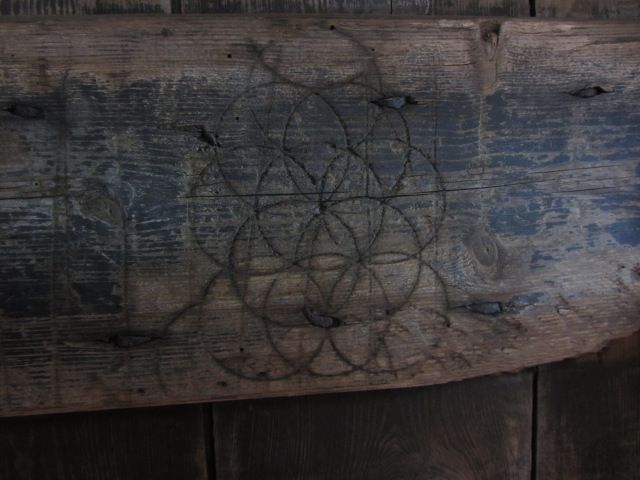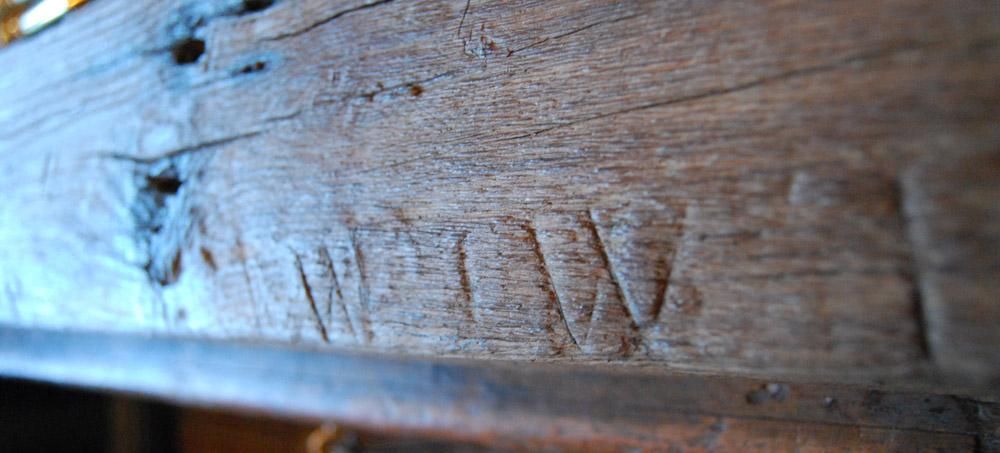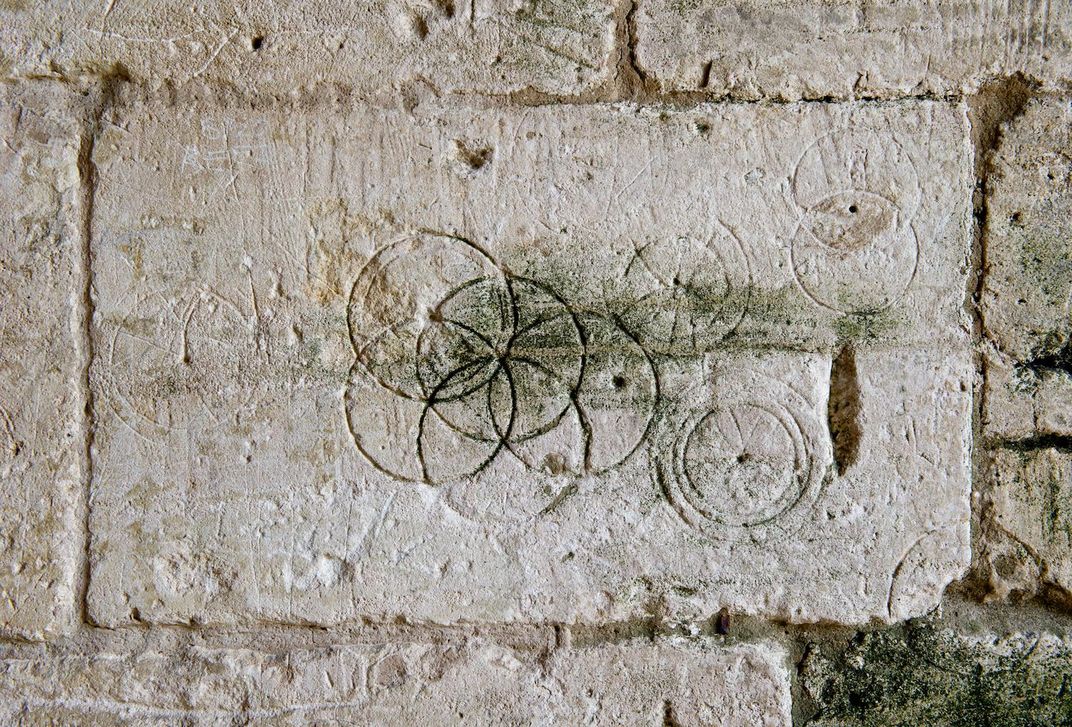Join an English Scavenger Hunt for Spooky, Supernatural Scratches
“Witch marks” are all over old buildings in England—and this Halloween, a preservation group is calling on the public to help document them
There's something supernatural inside one of a series of British caves called Wookey Hole: The largest known concentration of witch marks ever found in a cave, scratched into the stone by people looking to ward off danger. But the Witch's Chimney, as the scratched-up cave is known as, is not the only place in the U.K. where people marked their surroundings in the hopes of warding off witches. It turns out that those spooky scratches are all over Britain—and now, a new initiative has tasked the public with finding them.
Historic England, the public body dedicated to protecting English heritage, is using Halloween as a chance to call on people to help find the country's many witch, or apotropaic, marks. The marks can be found on historic buildings all over the country, from churches to barns and homes, but they're so common that they haven't been well documented. In an effort to change that, Historic England is asking people to pass on information about what they look like and where they can be found in an effort to create a comprehensive record of the marks.
The marks date from a historic era when witchcraft and supernatural beliefs were alive and well all over the world. Think of them as a form of medieval graffiti—an artistic bid for protection from evil spirits, witches and other forms of spookery. The word "apotropaic" comes from the Greek word "to ward off" and relates to magic rituals designed to deflect bad things. In the case of medieval England, that desire to stay safe was expressed by building owners and everyday people in these small, carved marks that called upon the Virgin Mary's protection or included pentacles or a "daisy wheel," an ancient image for the sun that was thought to bring good luck.
Witch marks are often so faint they can be hard to see, but they're there. They've been found scratched into rooms occupied by King James I following the Gunpowder Plot, burned onto the beams holding up the roof of the Tower of London, and etched into the walls of medieval churches throughout the country.
"They were such a common part of everyday life that they were unremarkable," says Duncan Wilson, Chief Executive of Historic England, in a statement. "Because they are easy to overlook, the recorded evidence we hold about where they appear and what form they take is thin. We now need the public's health to create fuller record about them and better understand them."
Think of it as the ultimate spooky scavenger hunt—a chance to uncover the superstitions medieval people scratched into their physical worlds. Can't make it to England to join the search party? You can check out a collection of witch marks here.
/https://tf-cmsv2-smithsonianmag-media.s3.amazonaws.com/accounts/headshot/erin.png)



/https://tf-cmsv2-smithsonianmag-media.s3.amazonaws.com/accounts/headshot/erin.png)